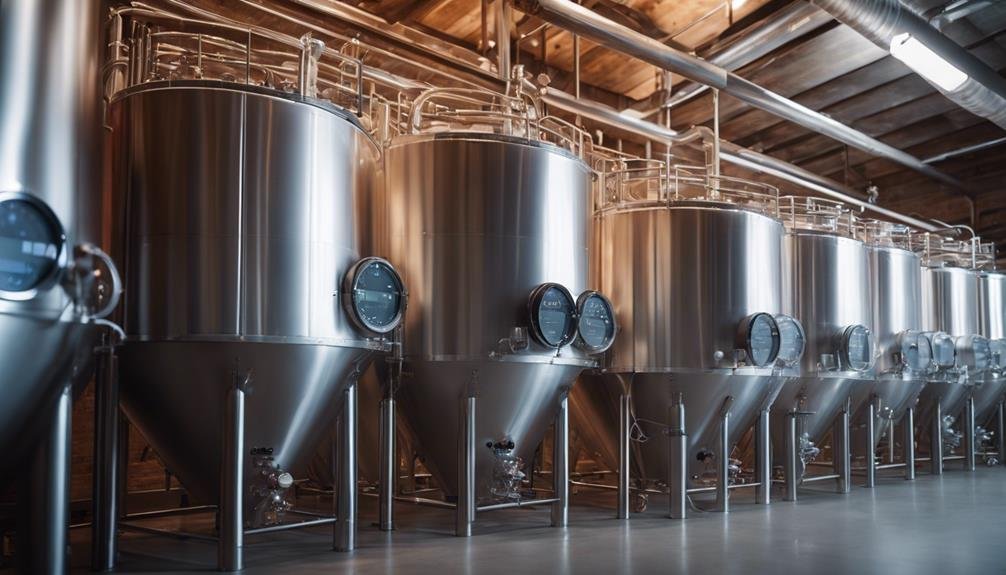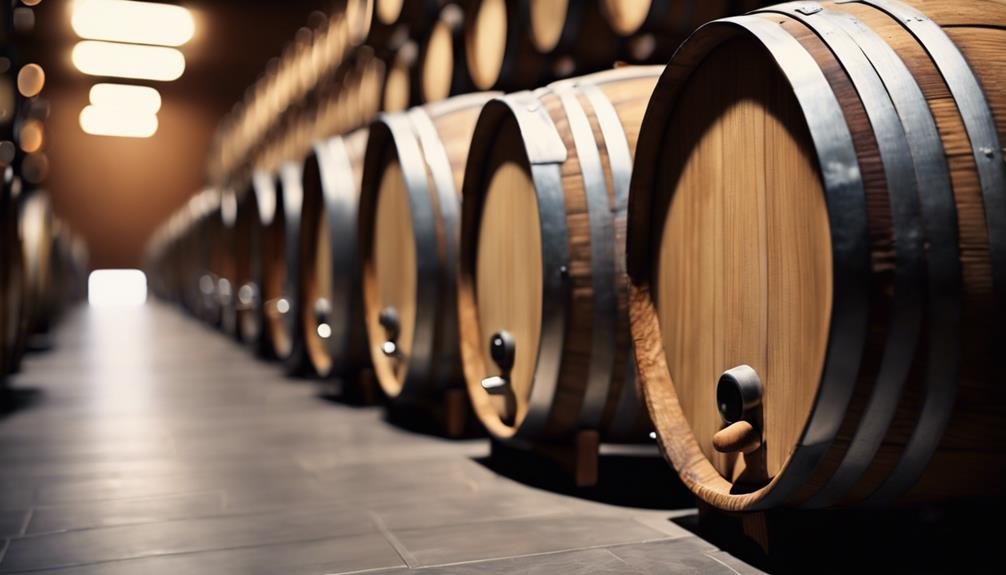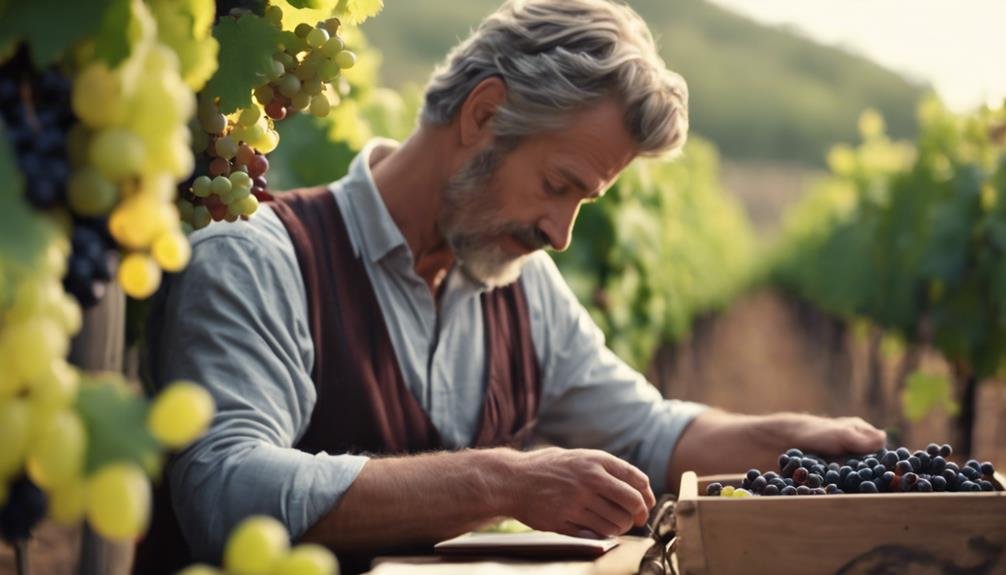Revealing Wine's Secrets: Crafting Liquid Masterpieces involves mastering harvest timing for ideal ripeness, balancing acidity for structure, and using maceration to extract flavors. Fermentation temperature impacts aroma and color, influencing final taste. Tannin extraction methods shape wine profiles and aging potential. Aging vessels like oak barrels or steel tanks affect flavor development. Each step in winemaking adds layers to the liquid artistry, creating unique textures and tastes. Understanding these intricacies uncovers the journey from grape to glass, showcasing the craftsmanship behind each bottle.
Harvest Timing Impact on Wine Quality
The timing of grape harvest plays a pivotal role in determining the quality and characteristics of the resulting wine. Ideal ripeness, where sugars, acids, and phenolic compounds reach their peak balance, is vital for producing high-quality wines. Harvesting too early can lead to wines with high acidity and underdeveloped flavors, while picking too late may result in wines with low acidity, high alcohol, and overripe characteristics. Achieving the right acidity balance is essential to guarantee the wine's structure and aging potential.
Additionally, weather variations can impact the best harvest time, influencing the overall quality of the vintage. Winemakers carefully monitor grape ripeness to make informed decisions that will ultimately shape the flavor profile and complexity of the wine.
Enhancing Wine Through Maceration Techniques
Enhancing wine through maceration techniques involves carefully manipulating grape skins' contact with the wine to extract desired flavors and colors. Flavor extraction and color enhancement are key goals during maceration.
By controlling the duration of skin contact, winemakers can influence the intensity and richness of the wine's color. Longer maceration times typically result in deeper hues and more robust flavors, while shorter times produce lighter tones and fruitier profiles.
This process is vital in red winemaking to extract tannins and pigments from the grape skins. The careful balance of maceration time is essential in crafting wines with the desired complexity and characteristics, showcasing the artistry and skill of the winemaker.
Fermentation Temperature Effects on Wine

Exploring the impact of fermentation temperatures on wine reveals significant influences on its final characteristics and flavor profiles. Fermentation temperature plays a pivotal role in aroma preservation and overall fermentation impact. Different temperature ranges can result in varying outcomes, affecting the balance of flavors and aromas in the wine.
For instance, cooler fermentation temperatures are preferred for white and rosé wines to preserve delicate aromas, as volatile aroma compounds are better preserved in these conditions. On the other hand, warmer fermentation temperatures can enhance color and tannin extraction in red wines.
Tannin Extraction Methods in Winemaking
Utilizing specific techniques during the winemaking process allows vintners to extract tannins effectively, influencing the structure and mouthfeel of the final wine product. Tannin extraction plays a vital role in shaping a wine's flavor profile and overall quality.
One method to control tannin levels is through early picking of grapes, which can help maintain a balance in acidity and tannins. By harvesting grapes earlier, winemakers can guarantee higher acidity levels in the wine, contributing to a vibrant and crisp taste. This also impacts the final product's aging potential and mouthfeel.
Achieving the right balance of tannins through early picking is essential in crafting wines with a harmonious and well-rounded character.
Influence of Aging Vessels on Wine

The choice of aging vessel greatly impacts the development and character of wine during the maturation process. Wood vs. steel aging vessels play an essential role in determining the aging impact on wine.
Oak barrels, commonly used for aging, enhance flavor development through oxygen exposure, adding fruitiness and nutty nuances. The porous nature of wood allows controlled oxygenation, influencing the wine's profile.
On the other hand, steel tanks are preferred for zesty white wines, limiting oxygen exposure to maintain freshness. The choice between wood and steel profoundly influences the flavor development of wine, with oak adding vanilla notes and steel preserving the wine's primary characteristics.
Winemakers carefully select the appropriate vessel to craft liquid masterpieces with distinct flavors and textures.
Closure Choices and Wine Preservation
One essential factor influencing wine preservation and aging potential is the choice of closure method. Closure innovations, such as screw caps and synthetic corks, have been developed to address issues like cork taint and unpredictable oxygen exposure.
Screw caps offer controlled oxygen ingress, preventing cork taint issues and providing a reliable seal for preserving wine quality. Winemakers like Landon Sam Keirsey prefer screw caps for their predictability in maintaining wine freshness and aging benefits.
The choice between cork and screw cap closures greatly impacts how wines evolve over time, influencing factors like oxidation and aging potential. Understanding the role of closures in wine preservation is vital for ensuring the longevity and quality of liquid masterpieces.
Secrets of Winemaker Preferences

Exploring winemaker preferences sheds light on the intricate decisions shaping the nuances of wine production and the artistry behind each bottle. Winemakers employ various techniques to achieve distinct flavor profiles, such as:
- Oak Treatment: Selecting between oak aging and steel tanks impacts the fruitiness, nuttiness, and tannin levels in the wine.
- Fermentation Methods: Choosing hot or cool fermentation for red or white wines influences color, tannin development, and aroma preservation.
- Closure Choices: Opting for corks or screw caps affects wine aging and preservation, with some winemakers like Landon Sam Keirsey preferring screw caps for their predictability.
Frequently Asked Questions
How Does Skin Contact During Maceration Affect the Taste of Wine?
Skin contact during maceration impacts wine taste by extracting color, tannins, and flavors from grape skins. Longer contact can intensify these elements, while oxidation from prolonged skin contact can add complexity and depth to the wine's profile.
What Are the Differences in Aroma Preservation Between Hot and Cool Fermentation?
Cool fermentation preserves delicate aromas in white and rosé wines, enhancing volatile aroma compounds. In contrast, hot fermentation intensifies color and tannins in red wines. Understanding these differences is essential for winemakers seeking to optimize aroma preservation in their wines.
Which Tannin Extraction Method, Pump Overs or Punch Downs, Is More Common in Artisanal Winemaking?
In artisanal winemaking, punch downs are more common for tannin extraction. This gentle stirring method is favored for its careful skin contact management. Contrastingly, pump overs, although efficient in oxygenation and extraction, are often employed in larger commercial operations.
How Does Oak Aging in Steel Tanks Impact the Flavor Profile of Wine?
Oak aging infuses wine with flavors like vanilla and nuttiness, enhancing fruitiness and tannins. Stainless steel aging in contrast limits oxygen exposure, preserving freshness in zesty white wines. The choice impacts the flavor profile, tannin levels, and aging potential of wine.
Why Do Some Winemakers, Like Landon Sam Keirsey, Prefer Screw Caps Over Corks for Wine Closures?
Winemakers like Landon Sam Keirsey prefer screw caps over corks for wine closures due to their innovative approach to winemaking. Screw caps, a modern twist in the cork debate, offer precise oxygen control, ensuring quality preservation and aging potential.
Conclusion
In the intricate world of winemaking, every decision made by the winemaker contributes to the final product's unique taste profile. Just as a conductor carefully orchestrates each instrument in an orchestra to create a harmonious symphony, winemakers meticulously craft liquid masterpieces that captivate the senses.
By comprehending the impact of harvest timing, maceration techniques, fermentation temperatures, tannin extraction methods, aging vessels, and closure choices, winemakers decipher the secrets of transforming grapes into transcendent sensory experiences for wine enthusiasts worldwide.